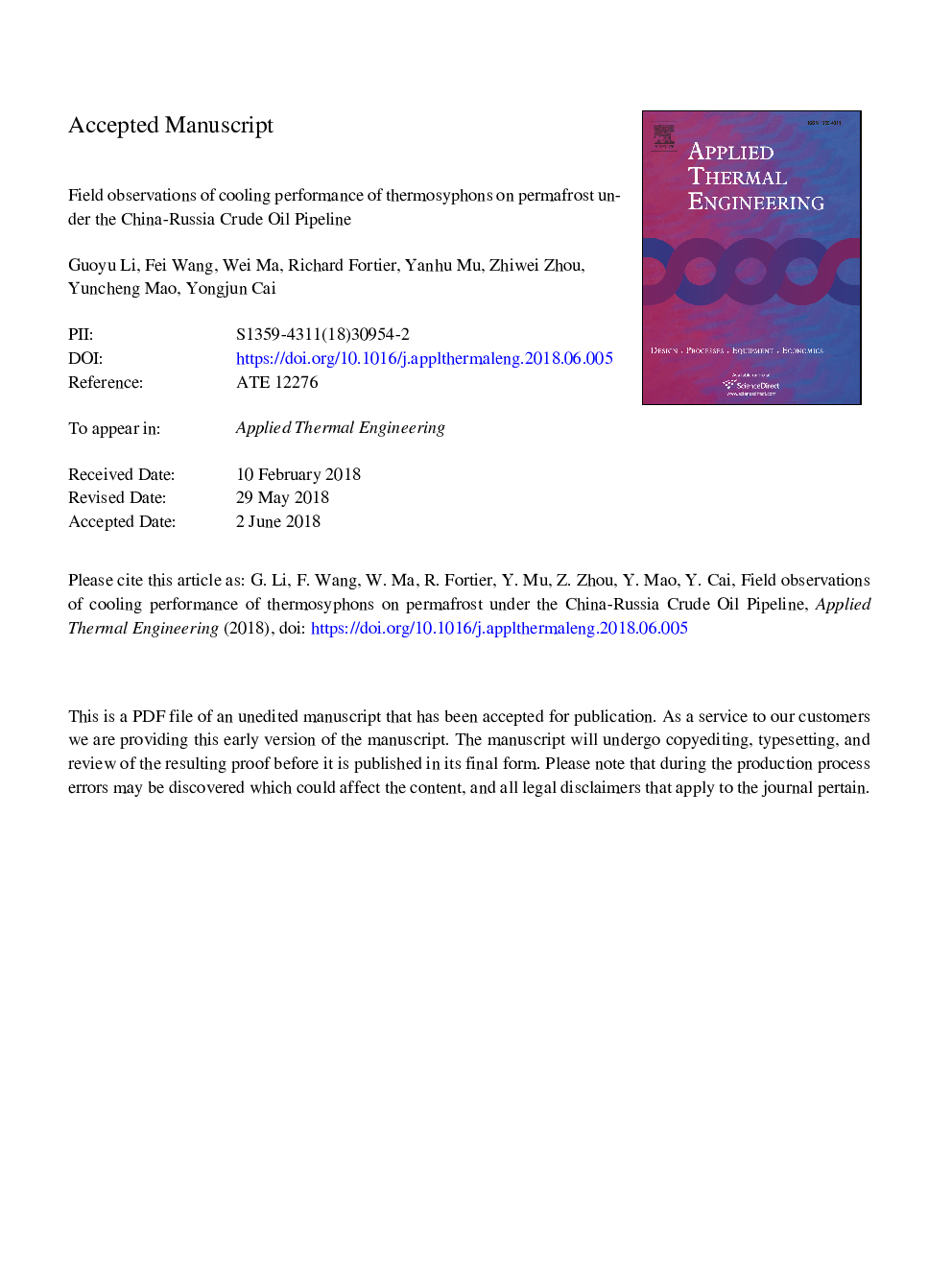| Article ID | Journal | Published Year | Pages | File Type |
|---|---|---|---|---|
| 7044994 | Applied Thermal Engineering | 2018 | 23 Pages |
Abstract
The buried China-Russia Crude Oil Pipeline (CRCOP) traverses 441-km discontinuous permafrost zone and has been operating at positive oil temperature since 2011. The underlying permafrost is degrading and thaw settlement occurs in the trench. An instrumented site was established to monitor ground temperature and water content under the CRCOP to evaluate permafrost degradation and cooling performance of the thermosyphons installed near the pipe. Field observations show that: (1) mean annual oil temperatures are higher than 0â¯Â°C and show a gradual warming trend (average increase by 2â¯Â°C during the observation period from 2012 to 2016; (2) the active layer thickness (ALT) increases by 2.7â¯m and the deep (15-20â¯m) permafrost temperature, 2â¯m away from the uninsulated pipe, rises 0.2â¯Â°C from 2014 to 2017; (3) thermosyphon can cool the soils surrounding the pipe and effectively mitigate thawing of underlying permafrost depending on its number, spacing and working duration; and (4) a thaw bulb surrounding the pipe exists even in winter due to a higher oil temperature. Field observations provide a better understanding of permafrost degradation, cooling effect and design parameters of thermosyphons, and basic data for numerical validation, implications for other similar cold regions pipeline engineering.
Related Topics
Physical Sciences and Engineering
Chemical Engineering
Fluid Flow and Transfer Processes
Authors
Guoyu Li, Fei Wang, Wei Ma, Richard Fortier, Yanhu Mu, Zhiwei Zhou, Yuncheng Mao, Yongjun Cai,
